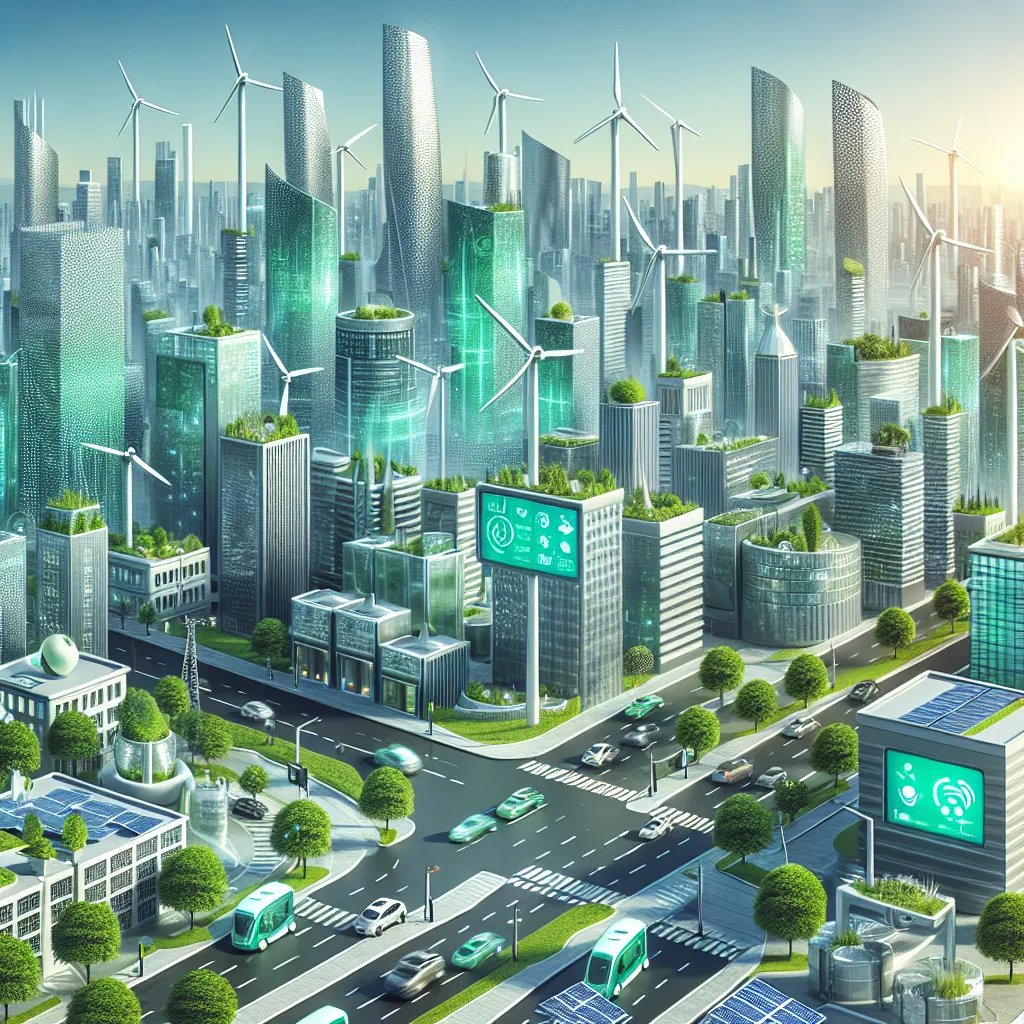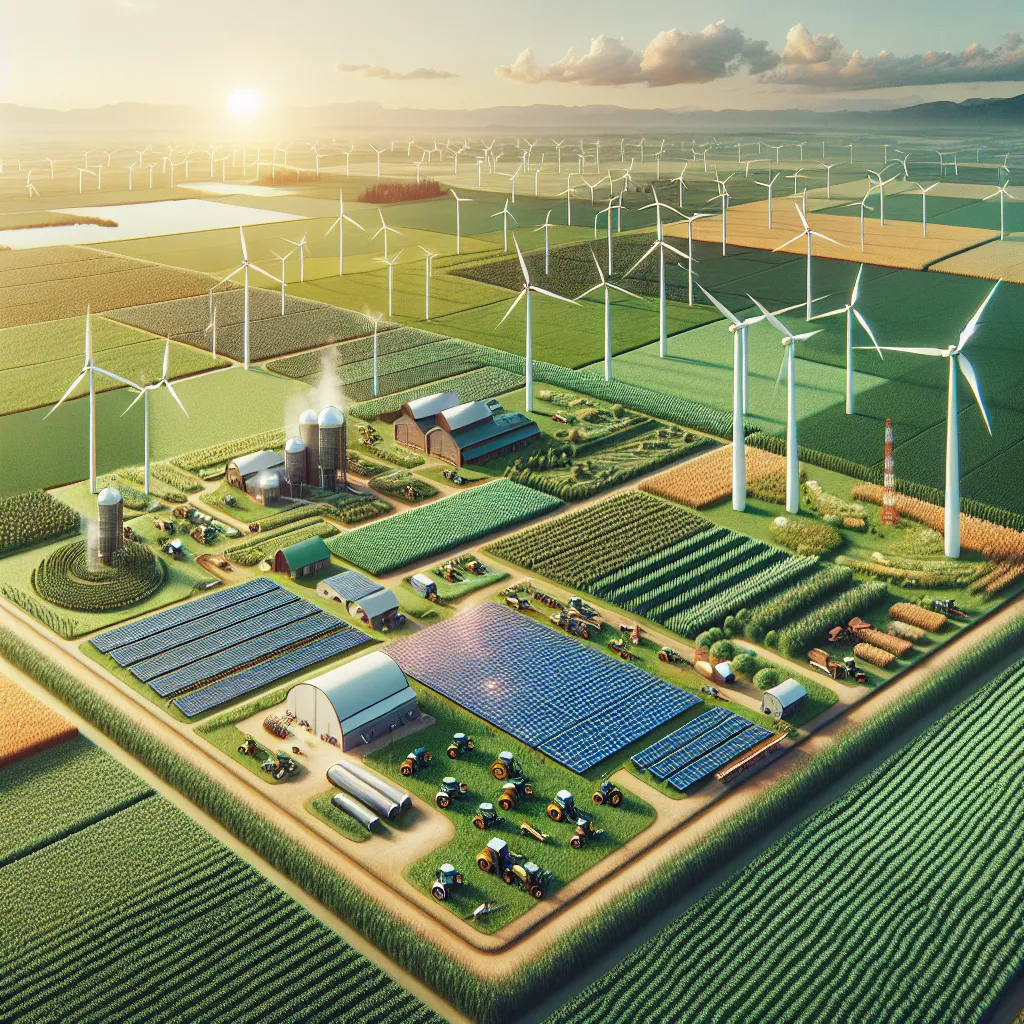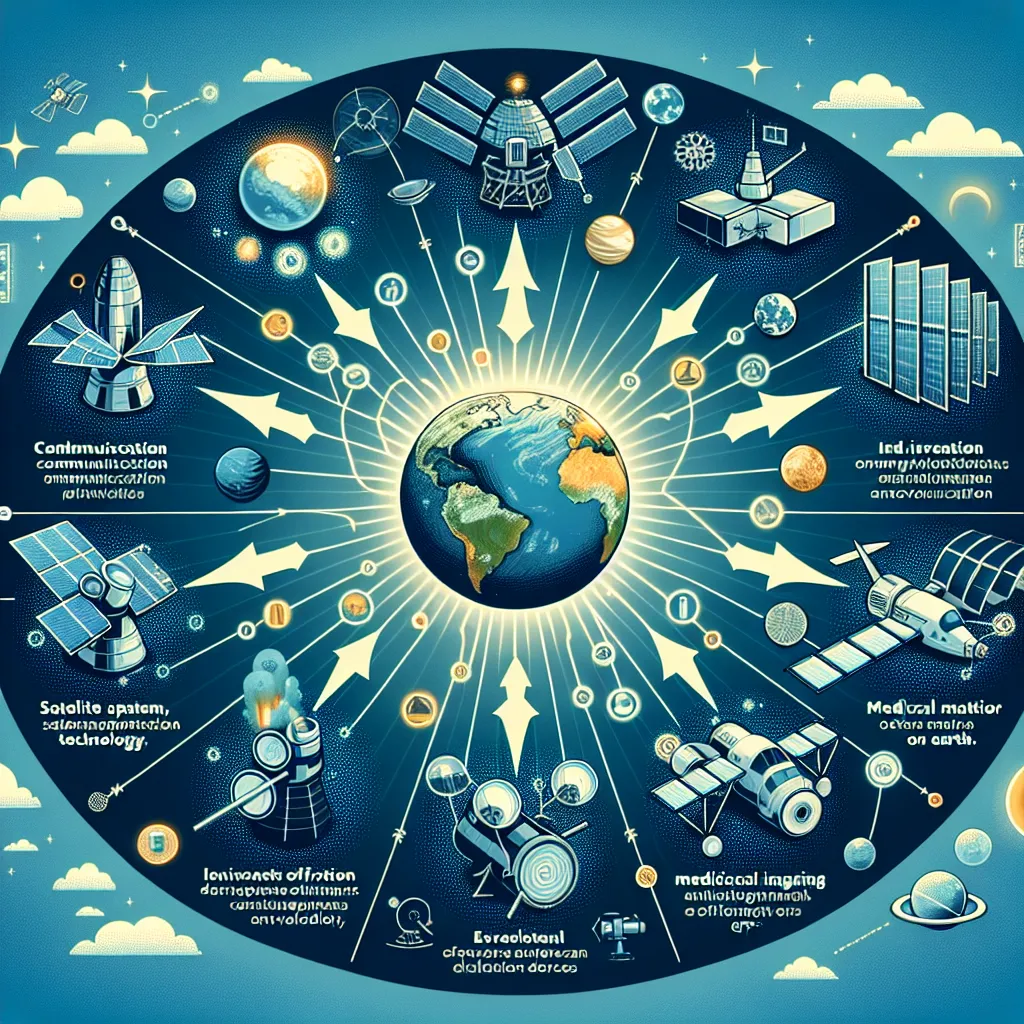Welcome to our IELTS Reading practice session focused on the crucial topic of “The role of smart cities in combating climate change.” As an experienced IELTS instructor, I’ve designed this comprehensive practice test to help you sharpen your reading skills while exploring an important contemporary issue. Let’s dive into the world of smart cities and their impact on climate change mitigation.
 Smart city combating climate change
Smart city combating climate change
Introduction to the IELTS Reading Test
Before we begin, let’s quickly review the structure of the IELTS Reading test. It consists of three passages of increasing difficulty, with a total of 40 questions to be completed in 60 minutes. Today’s practice will mirror this format, focusing on our central theme of smart cities and climate change.
Passage 1 (Easy Text): The Concept of Smart Cities
Reading Passage
Smart cities are urban areas that use digital technologies and data analytics to enhance the quality of life for their residents while promoting sustainability. These cities leverage Internet of Things (IoT) devices, sensors, and advanced communication networks to collect and analyze data on various aspects of urban life, including energy consumption, transportation, waste management, and environmental conditions.
One of the primary goals of smart cities is to optimize resource utilization and reduce the environmental impact of urban activities. By implementing intelligent systems, smart cities can significantly contribute to the fight against climate change. For example, smart energy grids can balance supply and demand more efficiently, reducing waste and promoting the integration of renewable energy sources.
Smart transportation systems are another key feature of these cities. By using real-time data and artificial intelligence, traffic flow can be optimized, reducing congestion and lowering greenhouse gas emissions from vehicles. Additionally, smart cities often promote the use of electric vehicles and public transportation, further reducing their carbon footprint.
Water management is also a crucial aspect of smart cities. Advanced sensors and analytics help detect leaks, monitor water quality, and optimize distribution, leading to more efficient use of this vital resource. Similarly, smart waste management systems use data-driven approaches to optimize collection routes and promote recycling, reducing the environmental impact of waste disposal.
The implementation of smart city technologies can lead to significant reductions in energy consumption and carbon emissions. For instance, smart street lighting systems that adjust brightness based on ambient light and pedestrian activity can cut energy use by up to 80%. Building automation systems can optimize heating, cooling, and lighting in large structures, further reducing energy waste.
As cities around the world face the growing challenges of climate change, the adoption of smart technologies offers a promising path towards more sustainable urban environments. By harnessing the power of data and technology, smart cities are paving the way for a more resilient and environmentally friendly future.
Questions 1-7
Do the following statements agree with the information given in the reading passage? Write
TRUE if the statement agrees with the information
FALSE if the statement contradicts the information
NOT GIVEN if there is no information on this
- Smart cities use digital technologies to improve the quality of life for their residents.
- The primary goal of smart cities is to increase economic growth.
- Smart energy grids can help integrate renewable energy sources more effectively.
- Smart transportation systems always prioritize private vehicle use over public transportation.
- Water management in smart cities involves using advanced sensors to detect leaks.
- Smart waste management systems can optimize collection routes.
- All smart city technologies are guaranteed to reduce carbon emissions.
Questions 8-13
Complete the sentences below. Choose NO MORE THAN TWO WORDS from the passage for each answer.
- Smart cities use ___ and data analytics to enhance urban life.
- Internet of Things devices and sensors collect data on various aspects of urban life, including ___ and transportation.
- Smart transportation systems use ___ to optimize traffic flow and reduce congestion.
- The use of electric vehicles and public transportation in smart cities helps reduce their ___.
- Smart street lighting systems can reduce energy use by adjusting brightness based on ___ and pedestrian activity.
- By adopting smart technologies, cities are working towards creating more ___ urban environments.
Passage 2 (Medium Text): Smart City Initiatives and Their Impact on Climate Change
Reading Passage
The proliferation of smart city initiatives across the globe has marked a significant shift in urban development strategies, with a particular focus on addressing the pressing issue of climate change. These initiatives encompass a wide range of technological innovations and policy measures designed to reduce carbon emissions, enhance energy efficiency, and promote sustainable practices in urban environments.
One of the most impactful areas where smart cities are making strides in combating climate change is in the realm of energy management. Advanced smart grid systems are being implemented to optimize electricity distribution and consumption. These grids utilize real-time data and machine learning algorithms to balance supply and demand, integrate renewable energy sources more efficiently, and reduce overall energy waste. For instance, the city of Amsterdam has implemented a smart grid project that has led to a 14% reduction in energy consumption and a significant decrease in carbon emissions.
Transportation is another critical sector where smart city technologies are proving instrumental in the fight against climate change. Intelligent transportation systems (ITS) are being deployed to reduce traffic congestion, optimize public transit routes, and promote low-carbon mobility options. Cities like Singapore have implemented comprehensive ITS that include adaptive traffic signal control, electronic road pricing, and real-time public transport information. These measures have resulted in a 20% reduction in traffic congestion and a corresponding decrease in vehicle emissions.
Smart cities are also revolutionizing waste management practices to minimize environmental impact. IoT-enabled waste bins equipped with fill-level sensors and AI-powered collection route optimization are significantly reducing the number of waste collection trips, thereby lowering fuel consumption and emissions. In Seoul, South Korea, the implementation of smart waste management systems has led to a 83% reduction in collection frequency and a 46% decrease in operational costs.
Water management is yet another area where smart city technologies are making substantial contributions to climate change mitigation. Advanced leak detection systems, smart meters, and predictive maintenance tools are being employed to conserve water resources and reduce the energy required for water treatment and distribution. The city of Barcelona, for example, has implemented a smart water management system that has resulted in annual savings of 42.5 million liters of water.
Building efficiency is a cornerstone of smart city initiatives aimed at reducing carbon footprints. Smart building management systems (BMS) utilize sensors, IoT devices, and AI to optimize heating, cooling, and lighting in real-time, significantly reducing energy consumption. In New York City, the implementation of smart BMS in the Empire State Building has led to a 38% reduction in energy use, showcasing the potential of these technologies in existing structures.
While the positive impact of smart city initiatives on climate change mitigation is evident, challenges remain. The initial investment required for implementing these technologies can be substantial, and there are concerns about data privacy and cybersecurity. Additionally, ensuring equitable access to the benefits of smart city technologies across all socioeconomic groups remains a critical challenge.
Despite these hurdles, the role of smart cities in combating climate change continues to grow in importance. As urban populations expand and the effects of climate change intensify, the innovative solutions offered by smart city technologies provide a promising path towards more sustainable, resilient, and low-carbon urban futures.
Questions 14-19
Choose the correct letter, A, B, C, or D.
-
According to the passage, smart city initiatives primarily focus on:
A) Increasing urban population
B) Boosting economic growth
C) Addressing climate change
D) Improving public transportation -
The smart grid project in Amsterdam resulted in:
A) 14% increase in energy consumption
B) 14% reduction in energy consumption
C) 14% increase in renewable energy use
D) 14% reduction in electricity costs -
Intelligent transportation systems in Singapore have led to:
A) 20% increase in traffic congestion
B) 20% reduction in public transport use
C) 20% reduction in traffic congestion
D) 20% increase in vehicle emissions -
The implementation of smart waste management systems in Seoul has resulted in:
A) 83% increase in collection frequency
B) 83% reduction in collection frequency
C) 46% increase in operational costs
D) 46% reduction in waste generation -
Barcelona’s smart water management system has achieved:
A) Annual savings of 42.5 million liters of water
B) 42.5% reduction in water consumption
C) 42.5 million euro savings in water costs
D) 42.5% increase in water treatment efficiency -
The Empire State Building in New York City has experienced:
A) 38% increase in energy use
B) 38% reduction in energy use
C) 38% reduction in carbon emissions
D) 38% increase in building efficiency
Questions 20-26
Complete the summary below. Choose NO MORE THAN TWO WORDS from the passage for each answer.
Smart city initiatives are employing various technological innovations to combat climate change. In the energy sector, (20) are being used to optimize electricity distribution and consumption. The transportation sector benefits from (21) that reduce congestion and promote low-carbon mobility options. Smart waste management systems use (22) to optimize collection routes, while water management employs (23) for leak detection. (24) play a crucial role in reducing energy consumption in buildings. Despite the positive impacts, challenges such as high (25) and concerns about (26) ___ need to be addressed for the successful implementation of smart city technologies.
Passage 3 (Hard Text): The Synergy Between Smart Cities and Climate Change Mitigation: A Multifaceted Approach
Reading Passage
The nexus between smart cities and climate change mitigation represents a paradigm shift in urban development, offering a multifaceted approach to addressing one of the most pressing challenges of our time. As urban areas continue to burgeon, accounting for a disproportionate share of global greenhouse gas emissions, the integration of cutting-edge technologies and data-driven decision-making processes in city management has emerged as a potent tool in the fight against climate change.
At the heart of this synergy lies the concept of urban metabolism, which views cities as complex systems with inputs, outputs, and internal processes analogous to biological organisms. Smart city technologies enable a more granular understanding of these metabolic flows, allowing for targeted interventions to optimize resource utilization and minimize waste. For instance, advanced sensor networks and Internet of Things (IoT) devices can provide real-time data on energy consumption patterns, enabling dynamic load balancing and demand response mechanisms that significantly reduce carbon emissions from power generation.
The transportation sector, a major contributor to urban carbon footprints, is undergoing a radical transformation through smart city initiatives. Intelligent transportation systems (ITS) leverage big data analytics and artificial intelligence to optimize traffic flow, reduce congestion, and promote multimodal mobility. Cities like Copenhagen have implemented comprehensive cycling infrastructure and bike-sharing programs, integrated with smart traffic management systems, resulting in a modal shift towards low-carbon transportation options. This approach not only reduces emissions but also improves air quality and public health outcomes.
Water management in smart cities exemplifies the potential for technological innovation to address both climate change mitigation and adaptation. Smart water grids equipped with advanced metering infrastructure and leak detection systems not only conserve water resources but also reduce the energy required for water treatment and distribution. Cities like Tokyo have implemented sophisticated stormwater management systems that combine real-time weather data with adaptive infrastructure to mitigate flood risks exacerbated by climate change, while simultaneously replenishing groundwater reserves.
The built environment, responsible for a significant portion of urban energy consumption, is being revolutionized through smart building technologies. Building information modeling (BIM) and digital twins enable the optimization of building design and operation, maximizing energy efficiency and minimizing carbon emissions throughout the lifecycle of structures. Retrofitting existing buildings with smart systems has shown remarkable potential, with cities like New York achieving up to 50% reductions in energy consumption through targeted interventions guided by data analytics.
Urban agriculture and green infrastructure initiatives, facilitated by smart city technologies, offer a dual benefit of carbon sequestration and climate resilience. Vertical farming systems, integrated with building automation and precision agriculture techniques, can significantly reduce the carbon footprint of food production while enhancing urban food security. Similarly, smart parks and green corridors equipped with IoT-enabled irrigation systems and biodiversity monitoring tools contribute to urban cooling, air purification, and ecosystem preservation.
The circular economy concept is being operationalized in smart cities through advanced waste management systems that employ AI-powered sorting, blockchain-based material tracking, and waste-to-energy technologies. These innovations not only reduce methane emissions from landfills but also recuperate valuable resources, thereby decoupling economic growth from resource consumption and environmental degradation.
While the potential of smart cities in combating climate change is immense, several challenges must be addressed to fully realize this potential. Data privacy concerns, cybersecurity risks, and the digital divide pose significant hurdles to the widespread adoption of smart city technologies. Moreover, the embodied carbon in the production and deployment of these technologies must be carefully considered to ensure a net positive impact on climate change mitigation efforts.
The governance of smart cities presents another layer of complexity, requiring interdisciplinary collaboration and novel policy frameworks to effectively integrate technological solutions with urban planning and climate action strategies. Public-private partnerships and citizen engagement initiatives are crucial for fostering innovation and ensuring that smart city developments align with the needs and values of urban communities.
In conclusion, the symbiosis between smart cities and climate change mitigation offers a promising pathway towards sustainable urban futures. By leveraging advanced technologies, data analytics, and systems thinking, cities can not only reduce their carbon footprints but also enhance their resilience to climate impacts. As we navigate the challenges of the 21st century, the continued evolution of smart city initiatives will play a pivotal role in shaping our collective response to the global climate crisis.
Questions 27-31
Choose the correct letter, A, B, C, or D.
-
The concept of urban metabolism in smart cities:
A) Focuses solely on energy consumption
B) Views cities as complex systems with inputs and outputs
C) Is unrelated to climate change mitigation
D) Prioritizes economic growth over environmental concerns -
Copenhagen’s approach to transportation has resulted in:
A) Increased carbon emissions
B) A shift towards high-carbon transportation options
C) A modal shift towards low-carbon transportation options
D) No significant change in transportation habits -
Smart water grids in cities like Tokyo:
A) Only focus on water conservation
B) Increase energy consumption for water treatment
C) Address both water conservation and flood risks
D) Have no impact on groundwater reserves -
The retrofitting of existing buildings with smart systems in New York has led to:
A) Up to 50% increase in energy consumption
B) Up to 50% reduction in energy consumption
C) No significant change in energy consumption
D) 100% reduction in carbon emissions -
The circular economy concept in smart cities:
A) Increases methane emissions from landfills
B) Has no effect on resource consumption
C) Focuses only on waste-to-energy technologies
D) Aims to decouple economic growth from environmental degradation
Questions 32-36
Complete the sentences below. Choose NO MORE THAN THREE WORDS from the passage for each answer.
- Smart city technologies enable a ___ of urban metabolic flows, allowing for targeted interventions.
- Intelligent transportation systems use ___ and artificial intelligence to optimize traffic flow and reduce congestion.
- ___ and digital twins are used to optimize building design and operation in smart cities.
- Vertical farming systems integrated with building automation can reduce the ___ of food production in urban areas.
- The governance of smart cities requires ___ and novel policy frameworks to integrate technological solutions with urban planning.
Questions 37-40
Do the following statements agree with the claims of the writer in the reading passage? Write
YES if the statement agrees with the claims of the writer
NO if the statement contradicts the claims of the writer
NOT GIVEN if it is impossible to say what the writer thinks about this
- Smart city technologies always result in a net positive impact on climate change mitigation efforts.
- Data privacy and cybersecurity risks pose significant challenges to the adoption of smart city technologies.
- Public-private partnerships are unnecessary for the development of smart cities.
- The evolution of smart city initiatives will play a crucial role in addressing the global climate crisis.
Answer Key
Passage 1
- TRUE
- FALSE
- TRUE
- FALSE
- TRUE
- TRUE
- NOT GIVEN
- digital technologies
- energy consumption
- artificial intelligence
- carbon footprint
- ambient light
- sustainable
Passage 2
- C
- B
- C
- B
- A
- B
- smart grid systems
- intelligent transportation systems
- AI-powere


